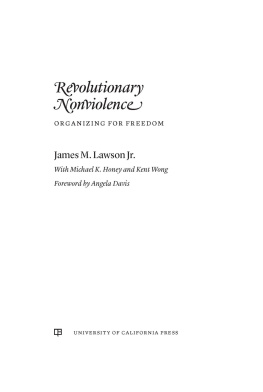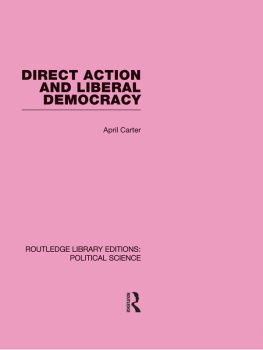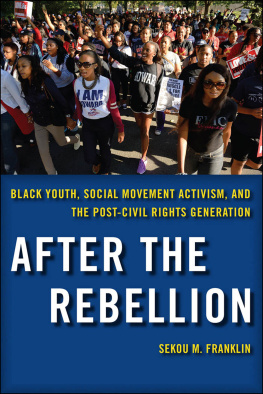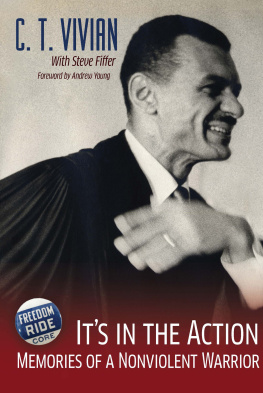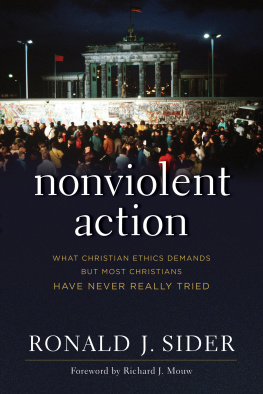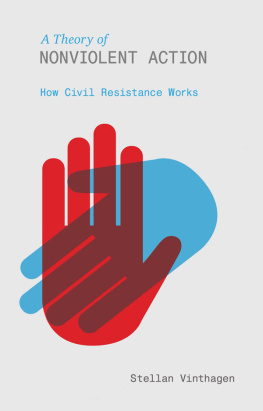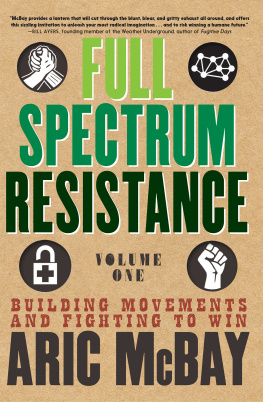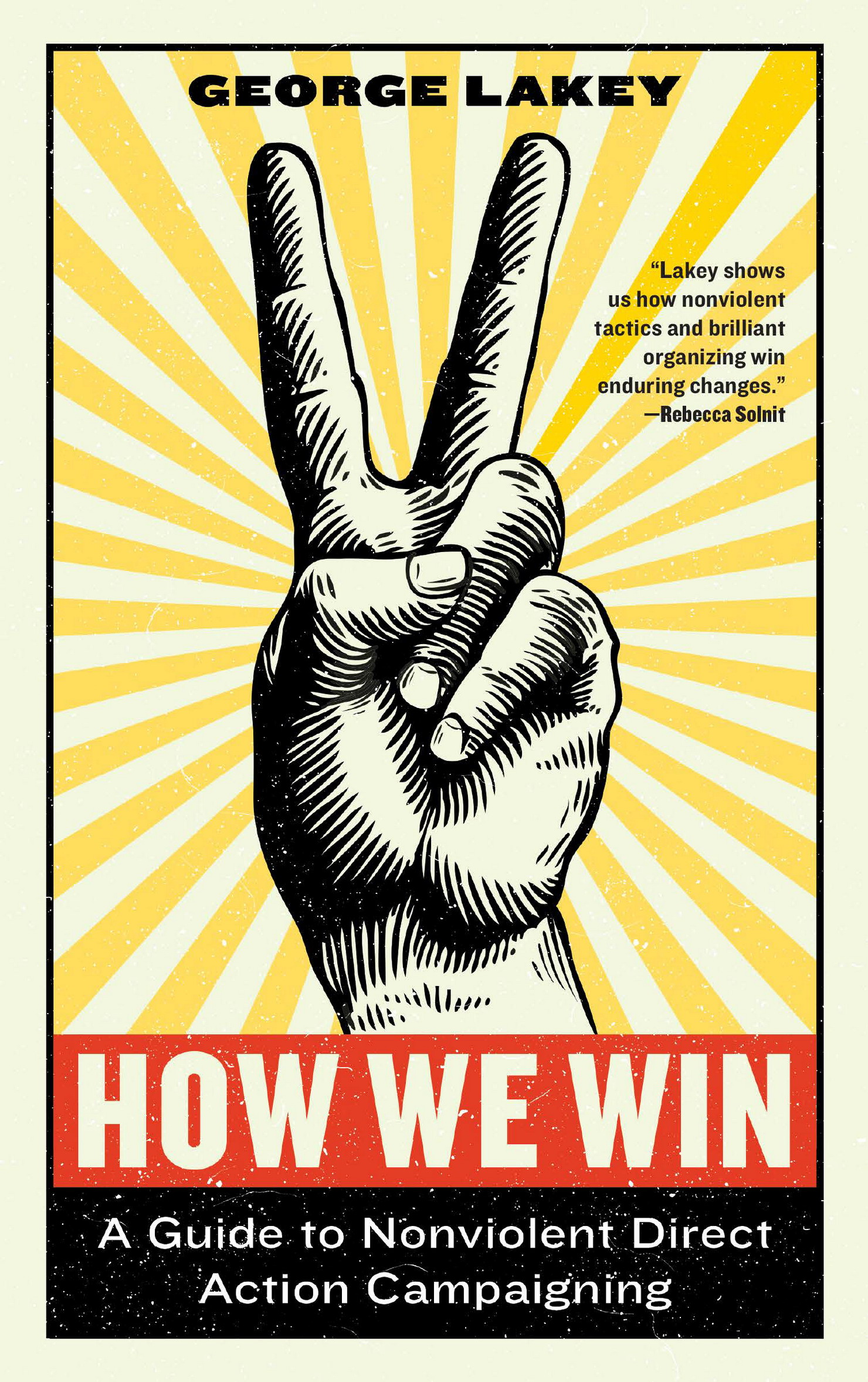Contents
ACKNOWLEDGMENTS
A s with any successful campaign, theres a community at the heart of this book. As a young activist I learned deeply from Bayard Rustin, Lillian and George Willoughby, Larry Scott, and Marty Oppenheimer. Generous people including Berit Lakey, Viki Laura List, and Johnny Lapham supported my project innovations over the years in direct action, organizing, and training. Family members gave up time they wanted with me, and my Quaker Meeting became used to my coming and going.
Waging Nonviolence editors Bryan Farrell and Eric Stoner encouraged me to use my ideas that first appeared on that online publication in this book.
Thanks to Training for Changes Zein Nakhoda for the book title, and to the fine Melville House team, especially Marina Drukman, Susan Rella, Stephanie DeLuca, and my editor Ryan Harrington.
This book is dedicated to five children, the youngest generation of the Lakey family: Christopher, Yasin, Zaine, Ella, and Anwar. May they harvest abundant fruit from the seeds todays activist generation is sowing.
ADDITIONAL RESOURCES
GENERAL, INCLUDING VISION
Klein, Naomi. No Is Not Enough. Chicago: Haymarket Books, 2017.
Movement for Black Lives. A Vision for Black Lives: Policy Demands for Black Power, Freedom, & Justice. 2006, https://policy.m4bl.org.
Solnit, Rebecca. Hope in the Dark: Untold Stories, Wild Possibilities. Chicago: Haymarket Books, 2016.
Yes! Magazine for articles on promising alternatives being invented now.
STRATEGY AND TACTICS
Bartkowski, Maciej J., ed. Recovering Nonviolent History: Civil Resistance in Liberation Struggles. Boulder, CO: Lynne Rienner, 2013.
Boyd, Andrew, ed. Beautiful Trouble: A Toolbox for Revolution. New York: OR Books, 2012.
Center for Story-based Strategy (https://www.storybasedstrategy.org/)
Chenoweth, Erica, and Maria J. Stephan. Why Civil Resistance Works: The Strategic Logic of Nonviolent Conflict. New York: Columbia University Press, 2011.
Engler, Mark, and Paul Engler. This Is an Uprising: How Nonviolent Revolt Is Shaping the Twenty-First Century. New York: Nation Books, 2016.
Handbook for Nonviolent Campaigns, 2nd edition. Coordinated by Andrew Dey. New York: War Resisters League, 2014.
Hunter, Daniel. Strategy and Soul: A campaigners tale of fighting billionaires, corrupt officials, and Philadelphia casinos. Self-published, 2013.
Hunter, Daniel. Building a Movement to End the New Jim Crow: An organizing guide. The Veterans of Hope Project, 2015.
King, Martin Luther, Jr. Why We Cant Wait. New York: New American Library, 1963.
Kurtz, Lester R., and Lee A. Smithey, eds. The Paradox of Repression and Nonviolent Movements. Syracuse, NY: Syracuse University Press, 2018.
Lakey, George. Toward a Living Revolution. Revised edition of 1973s Strategy for a Living Revolution. Eugene, OR: Wipf & Stock, 2016.
Lakey, George. Viking Economics: How the Scandinavians got it right and how we can, too. Brooklyn: Melville House, 2016.
Marovic, Ivan. The Path of Most Resistance: A Step-by-Step Guide to Planning a Nonviolent Campaign. Washington, D.C.: ICNC Press, 2018.
Moyer, Bill. Doing Democracy, Gabriola Island, B.C.: New Society Publishers, 2001.
Reinsborough, Patrick, and Doyle Canning. Re-imagining Change: How to use story-based strategy to win campaigns, build movements, and change the world, 2nd edition. Oakland, CA: PM Press, 2017.
Sharp, Gene. The Politics of Nonviolent Action. Boston: Porter Sargent Publishers, 1973.
TRAINING AND GROUP-BUILDING
Cornell, Andrew. Oppose and Propose: Lessons from Movement for a New Society. Oakland, CA: AK Press, 2011.
Lakey, George. Facilitating Group Learning. San Francisco: Jossey-Bass, 2010.
Lakey, Berit, George Lakey, Rod Napier, and Janice Robinson. Grassroots and Nonprofit Leadership: A Guide for Organizations in Changing Times. Gabriola Island, B.C.: New Society Publishers, 1995.
Smucker, Jonathan Matthew. Hegemony How-To: A Roadmap for Radicals. Chico, CA: AK Press, 2017.
Starhawk. The Empowerment Manual: A Guide for Collaborative Groups. Gabriola Island, B.C.: New Society Publishers, 2011.
ONGOING RESOURCES SUPPORTING
HOW WE WIN
WAGING NONVIOLENCELIVING REVOLUTION COLUMN
Waging Nonviolence (wagingnonviolence.org) is an online publication that reports on social movements around the world which are using nonviolent direct action. Its a ready source of ideas for tactics and new approaches to tough situations. For people in the United States and United Kingdom who get distracted by symptoms of national decline, Waging Nonviolence reminds us of the continued vitality and creativity of people rising up around the world.
My column for Waging Nonviolence is called Living Revolution. Nearly a hundred of my articles are archived on the site. I use the column to weigh in on current movement controversies and issues, and welcome readers comments pro and con beneath each column.
DIRECT EDUCATION/TRAINING
People who throw themselves into direct action campaigns need training methods that empower them as deeply and rapidly as possible. By the late 1980s, innovators in adult education came up with methods that had even more transformational impact than popular education. I learned new methods, added advanced group dynamics, and adapted them all to social movementbuilding. I made sure the whole pedagogy would be conflict-friendly, then tested it in a dozen countries and many more cultures, to be sure it traveled well. The result: Direct Education.
The black activist and educator Barbara Smith and I founded Training for Change in 1991 to do this new kind of facilitation and teach others how to do it. TfC went global and continues to offer train-the-trainer workshops including a 17 day Super-T that includes four modules for advanced facilitation (TrainingforChange.org).
To broaden the reach of direct education, Jossey-Bass published my book Facilitating Group Learning in 2010, which has influenced training for direct action in places as disparate as England and West Papua.
GLOBAL NONVIOLENT ACTION DATABASE (GNAD)
http://nvdatabase.swarthmore.edu
This online searchable database has over 1,100 direct action campaigns. Researchers continue to add to that number. The campaigns are drawn from nearly 200 countries, and each one includes a narrative that reveals some of the dynamics in the contest between campaigners and their opponents, and the role of allies.
The campaigns are searchable by issue. By reading the narratives of campaigns on your issue, you may get new ideas for how to stay on the offensive.
You can also sort campaigns by degree of success (all campaigns are given scores for success), and read about campaigns that may have made characteristic mistakes, or scored ten out of ten points!
The campaigns are searchable by the demographics of the primary campaigners: indigenous people, women, students, working-class people, people of color. You can also search for campaigns on a neighborhood, local, or community level. For these searches use the Browse Cases by Tags button. Campaigns are also searchable by country, state, or city, providing the ability to learn about previous direct action experience that local people might not know about, even though it is part of a peoples legacy.


